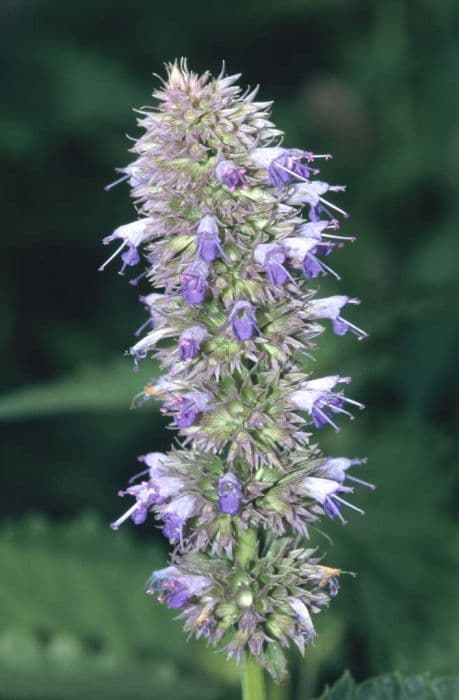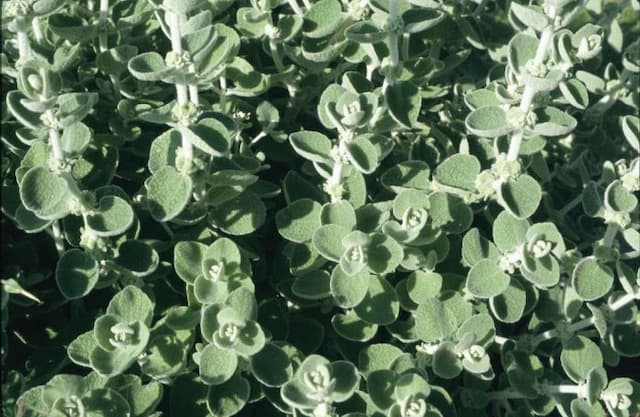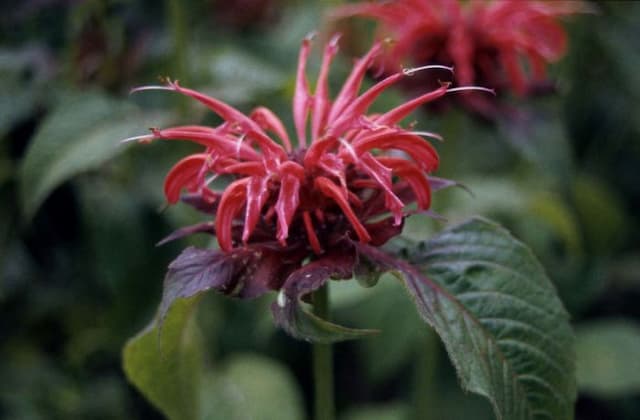Beautyberry Callicarpa dichotoma

ABOUT
The beautyberry is a decidrable shrub recognized mainly for its clusters of glossy, vibrant purple berries that encircle its stems. These berries typically emerge in late summer to fall and last well into winter, often providing a striking contrast to the plant's yellowing foliage in autumn. The leaves of the beautyberry are simple and oppositely arranged on the branches, with a finely toothed margin, a smooth surface, and a notably veined structure giving them a textured appearance. Prior to the appearance of its berries, the beautyberry produces small, light pink to lavender flowers, which are inconspicuous and arranged tightly in the leaf axils. These flowers bloom in the summer and are an important nectar source for insects. Following the flowering period, the berries begin to develop, initially presenting a green coloration before maturing to their characteristic bright purple hue. During the growing season, the foliage of the beautyberry is a lush green, offering a backdrop that magnifies the visual appeal of the berries. As a deciduous plant, its leaves will drop as the colder weather approaches. The overall form of the beautyberry is somewhat arching and open, providing a casual appearance that fits well into naturalistic plantings and informal garden settings. Its branching pattern lends itself to dense growth, making it a useful plant for massing or for use in a mixed border, where its seasonal changes can be appreciated.
About this plant
 Names
NamesFamily
Lamiaceae.
Synonyms
Purple Beautyberry, Early Amethyst.
Common names
Callicarpa dichotoma.
 Toxicity
ToxicityTo humans
The beautyberry plant is not considered to be toxic to humans. However, while the berries are sometimes used in traditional medicine and even in culinary applications in small amounts, not all parts are necessarily edible and its leaves or stems may cause stomach upset if ingested in large quantities. As with any plant, individuals may have allergies or sensitivities, so it's prudent to be cautious and not consume plant parts unless certain of their safety.
To pets
Beautyberry is not commonly listed as a toxic plant to pets. Although it is always possible that a pet could have a sensitivity or allergic reaction to a plant that is not typically considered poisonous, beautyberry is not known to cause a toxic response in domestic animals such as dogs and cats when ingested in small amounts. However, as with humans, the ingestion of large amounts may cause mild gastrointestinal upset, so it is still wise to prevent pets from consuming large quantities of any non-food plant material.
 Characteristics
CharacteristicsLife cycle
Perennials
Foliage type
Deciduous
Color of leaves
Green
Flower color
Pink
Height
3-4 feet (0.91-1.22 meters)
Spread
3-4 feet (0.91-1.22 meters)
Plant type
Shrub
Hardiness zones
5
Native area
Asia
Benefits
 General Benefits
General Benefits- Ornamental Value: Callicarpa dichotoma, commonly known as the Purple Beautyberry, has distinctive purple berries that provide aesthetic appeal to gardens and landscapes.
- Wildlife Attraction: The berries of the Purple Beautyberry are a food source for birds and other wildlife during the fall and winter months.
- Drought Tolerance: Once established, the Purple Beautyberry is relatively drought-tolerant, making it suitable for gardens in dryer climate zones.
- Low Maintenance: This plant typically requires minimal care, making it an easy addition for novice gardeners or those seeking a low-maintenance landscape.
- Seasonal Interest: With its brightly colored berries and attractive foliage, the Purple Beautyberry provides visual interest across multiple seasons.
- Compact Growth: The plant's growth habit is relatively compact, making it suitable for use in smaller gardens or landscapes with limited space.
 Medical Properties
Medical Properties- This plant is not used for medical purposes.
 Air-purifying Qualities
Air-purifying QualitiesThis plant is not specifically known for air purifying qualities.
 Other Uses
Other Uses- Callicarpa dichotoma, commonly known as beautyberry, can be used as a natural dye. The vibrant purple berries produce a beautiful color that can be used for dyeing textiles or crafts.
- The flexible branches of beautyberry can be woven into wreaths or other decorative items, especially due to the attractive purple hue of its berries during the fall season.
- Beautyberry bushes can be used as living fences to delineate borders or create privacy screens in gardens thanks to their dense growth habit.
- The foliage of beautyberry can be utilized in floral arrangements to add fullness and a touch of green in bouquets and centerpieces.
- Bird enthusiasts often use beautyberry plants in their gardens to attract various species of birds, as the berries are a popular food source when they ripe.
- Beautyberries can be used in homemade potpourri mixes, contributing a natural color and when dried mildly fragrance to the medley of dried plants and spices.
- Beautyberry can be incorporated into crafts, such as making berry-laden branches into decorative holiday ornaments or festive table displays.
- Gardeners may use the deciduous nature of beautyberry to provide seasonal interest, as the leaves turn shades of yellow and purple in the fall.
- Insect repellent: Some people crush the leaves of beautyberry to release a natural chemical that is said to repel mosquitoes and other insects.
- Photographers and painters often use beautyberry as a subject because of its striking appearance when the berries are in full bloom.
Interesting Facts
 Feng Shui
Feng ShuiThe Beautyberry is not used in Feng Shui practice.
 Zodiac Sign Compitability
Zodiac Sign CompitabilityThe Beautyberry is not used in astrology practice.
 Plant Symbolism
Plant Symbolism- Beauty: The vibrant, purple berries of the beautyberry bush, as the common name suggests, are often associated with beauty and aesthetic appreciation.
- Protection: Some believe the beautyberry has protective qualities. It has been used in folk medicine and some gardeners plant it with the belief that it may repel pests.
- Abundance: With its plentiful berries that densely cluster on the branches, the beautyberry symbolizes abundance and generosity.
- Uniqueness: The distinctive color of the beautyberry's fruit sets it apart from other plants, symbolizing uniqueness and individuality.
 Water
WaterThe beautyberry (Callicarpa dichotoma) prefers consistently moist soil, but it's important to avoid overwatering to prevent root rot. During the growing season, watering once a week with approximately 1 to 1.5 gallons of water per plant should suffice, depending on local weather conditions and soil drainage. Adjustments are necessary during periods of rain or drought, watering more frequently in hot, dry periods, and reducing frequency when rainfall is adequate. In the winter, reduce watering to every other week, or less, depending on the temperature and rainfall, as the plant requires less moisture when dormant.
 Light
LightBeautyberries thrive in full sun to partial shade. The ideal spot for a beautyberry plant is one where it can receive at least 4 to 6 hours of direct sunlight daily, which encourages prolific flowering and berry production. However, it can tolerate some shade, especially in hotter climates where afternoon shade can help protect the plant from intense heat.
 Temperature
TemperatureBeautyberry plants are hardy from USDA zones 5 through 8, withstanding minimum temperatures between -20 to -10°F. Ideally, they thrive in temperatures ranging from 60 to 80°F during the growing season. Extreme heat above 90°F might stress the plant, while prolonged exposure to temperatures below freezing can damage or kill the plant if it's not in a dormant state.
 Pruning
PruningPruning beautyberry is mainly to maintain shape and encourage bushy growth, as the plant flowers and fruits on new wood. Prune in late winter or early spring by cutting back one-third to one-half of the previous year's growth. Thinning out old or crowded branches can also improve air circulation and light penetration within the plant, promoting better berry production.
 Cleaning
CleaningAs needed
 Soil
SoilBeautyberry thrives in well-draining soil rich in organic matter with a pH range from 5.5 to 6.5. A mix of loam, compost, and a small amount of sand or perlite encourages healthy growth.
 Repotting
RepottingBeautyberry should be repotted every 2 to 3 years to refresh the soil and to accommodate its growing root system.
 Humidity & Misting
Humidity & MistingBeautyberry prefers moderate humidity but is adaptable to various atmospheric moisture levels, making it versatile in different environments.
 Suitable locations
Suitable locationsIndoor
Provide bright light, water when topsoil is dry, and ensure moderate humidity.
Outdoor
Plant in partial shade, well-drained soil, and water regularly.
Hardiness zone
5-8 USDA
 Life cycle
Life cycleBeautyberry (Callicarpa dichotoma) begins its life cycle as a seed that germinates in the spring after undergoing a period of cold stratification through winter to break dormancy. The seedling emerges and develops into a young plant with characteristic opposite leaves and woody stems as it matures. In early to mid-summer, the plant produces small, lilac-pink flowers in clusters that attract pollinators like bees and butterflies. After pollination, the flowers develop into clusters of striking purple berries by late summer or early fall, which persist into winter and provide food for birds. Throughout its growing season, beautyberry grows and creates new stems and leaves, potentially reaching up to 3 to 4 feet in height. The plant enters dormancy in winter, with leaves falling off, and then it resumes growth from the root system and remaining live stems when temperatures rise in spring.
 Propogation
PropogationPropogation time
Spring-summer
For the beautyberry, a popular method of propagation is through softwood cuttings taken in late spring or early summer. To ensure success, select a healthy, non-flowering stem and cut a 4 to 6-inch (10 to 15 centimeters) length. Remove the leaves from the lower half of the cutting and dip the cut end in a rooting hormone powder to encourage root development. Plant the cutting in a mixture of peat and perlite, ensuring the leafless part is buried. Then, place the pot in a warm, bright area but out of direct sunlight, and keep the soil consistently moist. Roots typically develop in 4 to 8 weeks, after which the young plants can be transplanted into individual pots and eventually into the garden once they've grown strong enough to withstand the elements.









